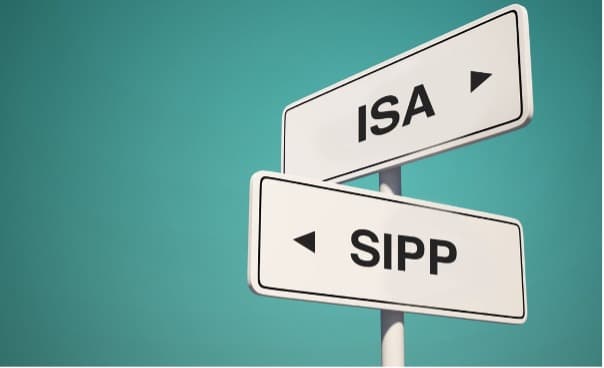Pensions, savings accounts, and premium bonds: where to start if you’ve left it to the last minute.

The most recent ‘tax year’ concludes today, 5 April 2023. The new tax year begins tomorrow.
Officially, we’re at the height of ISA season — and with the madness that has been the past few years, it can be hard to know where to start — especially for those who have left it to the last minute.
Of course, and I cannot stress this enough, this article IS NOT ADVICE. However, for many it does represent common sense and breaks down some of the common steps to brush down your finances and get ready for FY23/24.
And for those completely new to investing, I’ve already written a quick-start checklist here.
New tax year: ISAs and SIPPs
There are three common tax-efficient vehicles available to UK investors.
First is your SIPP (or self-invested personal pension). This made the headlines in the recent budget, where Chancellor Jeremy Hunt increased the annual allowance to £60,000 and scrapped the lifetime allowance entirely starting in the new tax year. Of course, these rule changes could be reversed at any time, so good luck with the planning.
However, in this current tax year, the annual allowance remains at £40,000. There are slightly complex rules surrounding very high earners and tax relief in general, but the idea is that you can pay £40,000 of your gross income into your pension, tax-free until you withdraw it at pensionable age (currently in your 50s).
It’s worth noting that even non-taxpayers can make contributions up to £2,880 per year, which will be topped up to £3,600 by government tax relief. And it’s also possible to pay this £2,800 into a pension for a child.
Second is your ISA (or individual savings account). You can pay £20,000 per annum out of net income into a specialised account which does not attract any tax on interest earnt, dividends, or capital gains. This is a very generous allowance — and there are no comparable accounts anywhere in the world. Stocks and Shares ISAs are more popular for medium-long term investors.
Third is Premium Bonds — which is an interesting choice as it serves multifunctional purposes for many investors; an emergency fund, somewhere to put cash set aside for tax, and finally an investment to make after you have used up your entire SIPP and ISA allowances.
For those at the very top, there’s the annual exemption of Inheritance Tax of £3,000 for gift giving, the £9,000 Junior ISA allowance for children alongside the smaller SIPP allowance.
I’ll not go into venture capital of EIS funding — if these apply to you, then a financial advisor would likely be appropriate.
Where should you start?
Again, this is not personal advice, simply a description of what works best for me.
The first thing to ensure — and this is important in a recessionary environment where the next round of job cuts is always just around the corner — is that you have an emergency fund. Three to six months of expenses is the norm. I keep this in Premium Bonds, though others will have this money in a cash ISA, savings account or similar.
The second is to pay off any high interest debt. The reality is that the average interest on the standard credit card is 19.5%, and for most any gains on the markets will be more than wiped out by card repayments.
Then there’s the key question of whether to prioritise your SIPP or your ISA. There are a few factors to consider when making this decision.

The first is tax-efficiency, and for most the SIPP is the clear-cut winner. Many employees pay an effective tax rate of over 70% on any income between £50,000 and £60,000 when considering income tax, national insurance, student loan repayments, and the high-income child benefit charge.
This tax rate is similar for the self-employed and limited company directors — so sacrificing excess income into a SIPP makes the most sense from a strictly financial perspective. Those lucky enough to earn over £100,000 a year face even more punitive taxation.
It’s also worth noting that you benefit from the capital gains and dividend returns on gross income invested, which will always be a larger sum than the net income invested in an ISA.
Currently, you can withdraw just over £250,000 tax-free when you reach retirement (assuming you have over £1 million in the pot), and then are taxed as normal on the rest. And by the time I hit retirement, there will be no National Insurance to pay, and my student loans will have been written off.
Given that the SIPP annual allowance is increasing to £60,000 from tomorrow, then why invest in an ISA with post-tax income?
There are a few excellent reasons.

First is that you can make use of any unused SIPP allowances in the past three tax years. But an ISA allowance is hard reset every year — aka the ‘use it or lose it’ rule. This means — especially for SME operators who experience uneven income — that the ISA can make more sense from a tax planning perspective.
Second is laziness or lack of financial education. ISAs are easy to understand — and don’t involve any tax planning or complexity. Simply take some of your pay and throw it in an investing account. SIPPs require checks on income, the occasional form, and can be intimidating — not everybody works in finance.
Third is the Lifetime ISA, which gives qualifying account holders a £1,000 annual government bonus on £4,000 of savings, usually to go towards the purchase of your first home. There are several restrictions, but this is a welcome and often much-needed boost.
Fourth is the instant nature of most ISAs. With a SIPP, you can’t access the cash until your mid-50s without some very harsh penalties, and in some cases, access isn’t possible at all. With an ISA (excluding Lifetime ISAs) you can withdraw your cash as and when needed, at any time, with no penalty.
Fifth is that the government can change the rules surrounding ISAs and SIPPs, even retrospectively, with no notice. For example, the age you can access your SIPP is currently 55 and will rise to 57 from 2028. There is no protection from parliamentary sovereignty, but an ISA investor benefits hugely from flexibility that is not afforded to SIPPs whenever a government gets tax hungry.
The bottom line
SIPPs are more tax efficient, but ISAs are more flexible. There are even specific circumstances where an ISA may be MORE financially optimal even if it remains less tax friendly.
For example, somebody who buys their first home with a combination of LISA and Stocks and Shares ISA returns will benefit both from not paying rent, and the capital appreciation on that house. Another who uses the extra ISA savings to move abroad, or even to a different city, to advance their career may end up far better off as well.
Consider your goals you had from 10 years ago. Have they changed over time? It’s important to not let the tax tail wag the investment dog, as maximising your SIPP over your ISA could restrict future life choices.
There’s also the much hated but perhaps underrated mantra that ‘you only live once.’ How valuable is £1 million nest-egg at 60 when your children are grown, your outgoings are smaller, and your body is old — versus a smaller amount at 45 when your finances are usually most-strained?
There is an element of personal attitude to risk and money that cannot be quantified by a dataset.
However, it’s worth noting that recent negative changes to capital gains and dividend taxes make these shelters even more ridiculously tax efficient in the new tax year than now.
And the clock is ticking.
This article has been prepared for information purposes only by Charles Archer. It does not constitute advice, and no party accepts any liability for either accuracy or for investing decisions made using the information provided.
Further, it is not intended for distribution to, or use by, any person in any country or jurisdiction where such distribution or use would be contrary to local law or regulation.
